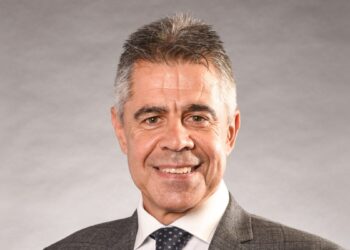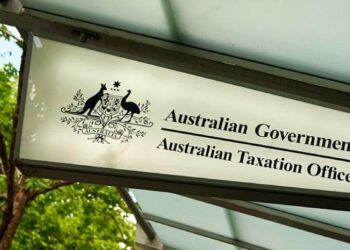Mark Ellem, head of education for Accurium, said winding up an SMSF should be done by 30 June so the current financial year will be the last year requiring audit and lodgment of an SMSF annual return.
On average, around 15,000 SMSFs are wound up each financial year, representing around 2.5 per cent of all SMSFs.
“In my experience, it is rare for the wind-up process to occur quickly and without issues,” Mr Ellem said.
“The key to a successful wind-up is in the planning to ensure that each party: trustee; administrator/accountant and financial advisor is aware of their role in the wind-up process and, particularly for the trustee, of the time needed to affect the wind-up.
To achieve this, the wind-up process should not be left to the last few days of the financial year. Generally, it will need to start much earlier, not later than the end of April. This allows time to deal with any issues that may arise during the wind-up process.”
Although there are many reasons for an SMSF to be wound up, Mr Ellem said it is also important to remember that a self-managed fund can be passed down through generations.
“Just because one generation no longer has a need for the SMSF, it doesn’t mean that another generation could not benefit from the SMSF.”
“One reason not to wind up an SMSF, but to continue it for the next generation, is tax. Once an SMSF is wound up, any income tax losses or capital losses the fund held are lost, forever. So, if the SMSF has either income tax or capital losses, consideration should be given to admitting new members who can benefit from these losses, rather than being lost upon winding up.
“For example, a fund with $50,000 of tax losses could be used to offset future assessable contributions, saving those new members $7,500 tax on assessable contributions.”
There are specific steps to winding up an SMSF that must be followed and include notifying members, including notice periods, and how member entitlements are valued. It can also outline how to deal with an unallocated amount, commonly referred to as a “general reserve” when winding up a fund.
Mr Ellem said there are also some other considerations that can delay the winding up process, which should be started as early as possible.
These include assets that may be difficult to liquidate or sell which can entail selling to a third party for cash settlement; selling to a related party for a cash settlement (with the sale price substantiated as market value); or ‘in specie’ transfer of the asset to a member as a lump sum benefit payment, including partial commutation of a (commutable) pension.
“It is important that the disposal of assets is incorporated into the wind-up procedure to ensure that preserved benefits are not incorrectly withdrawn from the fund; or benefits are withdrawn from the fund or rolled over in excess of subsequently calculated member balances,” Mr Ellem said.
“Where fund investments are part of a reinvestment scheme, such as dividend reinvestment plan (DRP), consider cancelling it before selling to avoid a residual allocation after the sale. Also, if there is a residual cash balance of any DRP, request a refund at the time of cancelling the DRP.”
He warned, however, that there can be challenges disposing of fund assets on which there are such as “frozen” investments.
“There are specific guidelines relating to frozen investments in managed investment schemes, including hardship provisions which allow withdrawal of up to $100,000 per calendar year, although no more than four withdrawals per calendar year,” he said.
“However, these withdrawal rules are subject to the discretion of the responsible entity and even if permitted, may delay or not assist at all in the wind-up of the fund.”
He said there is an option available for an SMSF with frozen assets where the frozen asset can be paid out to the member, where the member’s benefits are unrestricted non preserved, or the member’s dependant or Estate in the case of the death of the member, as an ‘in specie’ payment.
“This simply involves the changing of the title of the asset and does not involve any cash outflow for the institution or managed investment scheme that holds the frozen asset,” he said.
He added that where the ‘in specie’ benefit payment is arranged, it is still a disposal for CGT purposes and needs to be considered for GST and stamp duty.
“In relation to ‘in specie’ benefit payments, it should be noted that the Regulators, both APRA and ATO, have the view that only lump sum benefit payments can be made by way of an ‘in specie’ transfer of a fund asset and pension payments cannot.
“Further, since 1 July 2017 a partial commutation of a (commutable) pension cannot count towards the required minimum.
“And while there are no restrictions as to the transfer from the SMSF to a related party, the transfer is required to occur at market value. A transfer at below market value is likely to be a breach of section 65 SIS Act and a transfer at above market value is likely to be a breach of section 109 SIS Act.”
There are also specific conditions which must be met when winding up a pension fund, said Mr Ellem.
“Where a fund consists wholly of retirement phase account-based pensions it is deemed to be a segregated fund for the purposes of claiming exempt current pension income (ECPI),” he said.
“Consequently, any capital gain or loss from the disposal of assets, which are treated as segregated pension assets, are ignored.
“To ensure that the fund remains consisting wholly of retirement phase pensions until the date of fund wind up it is best to withdraw the asset sale proceeds as either a large pension payments or partial commutation of the pension.
“This will ensure that any capital gains made from the disposal of assets will be 100 per cent tax exempt with no member balances reverting back to accumulation and being required to use the actuarially determined proportionate method.”
Where a member is receiving a market-linked pension, this will be required to be rolled to another “complying pension”, which includes a market-linked pension.
Additionally, where the members of the fund are in receipt of the old legacy defined benefit pensions, care must be taken to the effective wind-up/rollover of such pensions. In these cases, it is recommended that the services of an actuary are obtained as issues may arise.
“Where an SMSF has legacy pensions or has an unallocated reserve, and the fund is to be wound up, it is recommended that an Actuary is engaged to assist with the wind up or rollover of these legacy defined benefit pensions,” Mr Ellem said.


